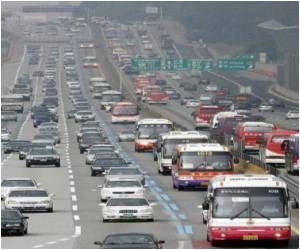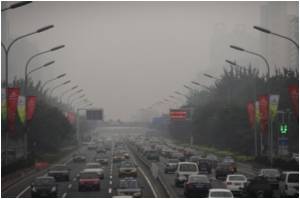Environmental pollution as a causative factor for cardiac ailments has been a topic of concern and research for long. Pollution has been known to cause stress and affect the heart functioning to a great extent.
According to the National Atmospheric Emissions Inventory of the United Kingdom, historically, it was just smoke in combination with other pollutants that was known to cause health problems.However, recent studies have linked concentrations of particles in the atmosphere with human health effects. Particles vary widely in size and composition. The PM10 particles are particles measuring 10Âμm or less. These are the particles which are likely to be inhaled by humans, and have become the widely accepted measure of particulate material in the atmosphere in the UK and in Europe.
In the 1970's, air pollution was mainly dominated by the domestic coal combustion, but more recently, other sources such as road transport (all road transport vehicles emit PM10, but diesel vehicles emit a greater mass of particulate per vehicle kilometer) and industrial processes (including bulk handling, construction, mining) account for a large share.
Only a few studies have observed the effects of exposure to particulate matter (pollution generated by traffic) on risk to myocardial infarction or, in simpler words, a heart attack.
(A heart attack occurs when blood flow to a part of the heart is blocked for a long time, eventually leading to death of that part of the heart muscle. In medical language, such a condition is called “myocardial infarction”)
A recent experimental study showed adverse effects on heart within a few hours of controlled exposure to dilute diesel exhaust fumes. This highlights the possibility of very short term (<1 day) exposure to traffic generated pollution or particulate matter affecting the heart.
• Systemic inflammatory response
• Increased blood viscosity or plasma fibrinogen changes
• Increased blood pressure
A recent study conducted by Krishnan Bhaskaran et al quantified the association between the risk of myocardial infarction and exposure to PM10, ozone, CO(carbon monoxide), NO2 (nitrogen dioxide), and SO2 (sulphur dioxide) at hourly intervals.
Data regarding heart attacks was collected from the Myocardial Ischaemia National Audit Project, a register that maintains details regarding heart attacks in England and Wales. Data on pollution was obtained from UK Air Quality Data and Statistics Database. Other data, that is, data on temperature and circulating viral infections were obtained from the British Atmospheric Data Centre and Communicable Diseases Surveillance Centre at the Health Protection Agency respectively.
Results of the study suggested that higher ambient levels of PM10 and NO2 are associated with an increase in myocardial infarction risk just 1–6 hours following exposure.
PM10 and NO2 are pollutants produced in urban areas largely by motor vehicles and are therefore likely to be markers of traffic-related pollution.
Surprisingly, there was no evidence of a net excess risk associated with any of the five pollutants studied over a 72-hour period after exposure.
In brief, the immediate risk increases were followed by reductions in risk at longer lags.
The pattern of a positive association between pollutant and myocardial infarction over 1–6 hours but then an inverse association at longer lags has shown to be consistent with a “short term displacement (or “harvesting”) effect of pollution” (Bringing forward by a few hours a heart attack that would have happened anyway)
Although numerous studies have demonstrated that higher levels of air pollution are associated with increased cardio respiratory mortality in urban settings in England and Wales, a similar association was not found in this study.
Since no net increase in myocardial infarction risk over a broader timescale was found, there may be limited potential for reducing myocardial infarctions through reductions in pollution alone. Findings therefore suggest that other, perhaps non-thrombotic, mechanisms are more important causes of mortality increases associated with higher pollution levels.
But again this finding cannot undermine calls for action on air pollution, which has well-established associations with broader health outcomes including overall, respiratory, and cardiovascular mortality.
This study is of great importance as it stands the largest one till date to investigate associations between the commonly measured pollutants and myocardial infarction risk at an hourly temporal resolution.
In the study, it was clearly seen that higher levels of the traffic-associated pollutants PM10 and NO2 were followed by a transiently increased risk of myocardial infarction up to 6 hours later. After this time period, there appeared to be subsequent reduction in risk at longer lags.
Thus, it is interpreted by the researchers that this kind of a pattern could increase the chances of a heart attack occurring much earlier in life than expected, in those prone to it.
Reference:
1. The effects of hourly differences in air pollution on the risk of myocardial infarction: case crossover analysis of the MINAP database; Krishnan Bhaskaran et al; BMJ 2011; 343:d5531
2. www.ncbi.nlm.nih.gov
3. National Atmospheric Emissions Inventory
http://naei.defra.gov.uk/pollutantdetail
Source-Medindia













